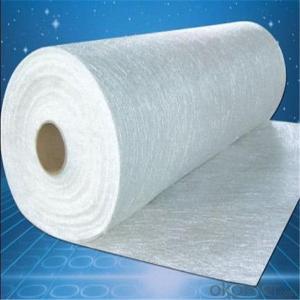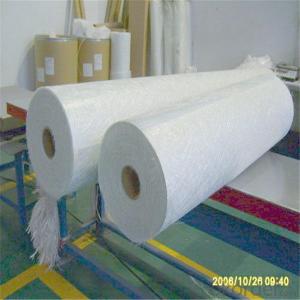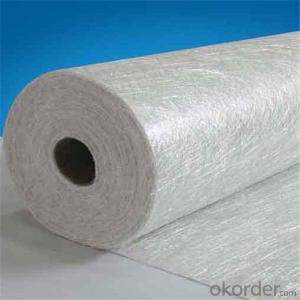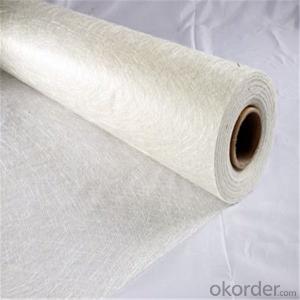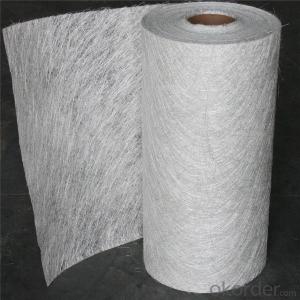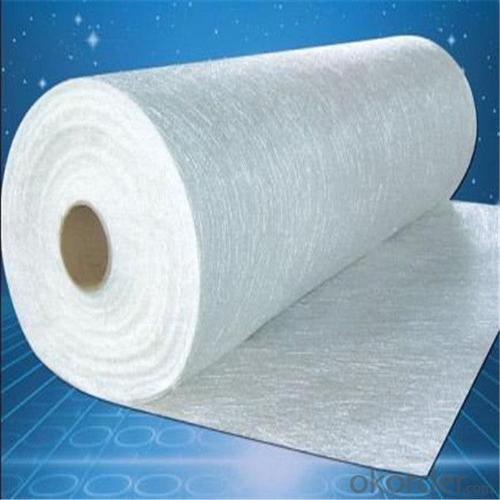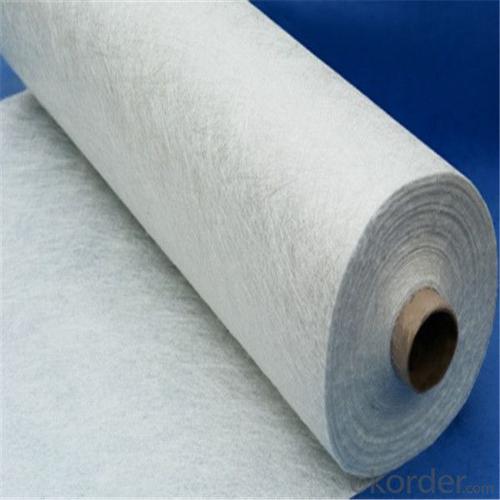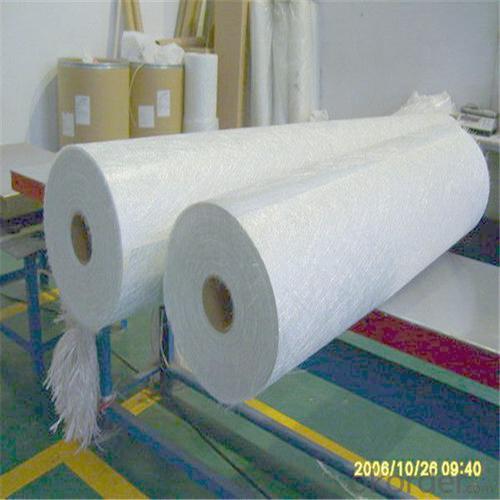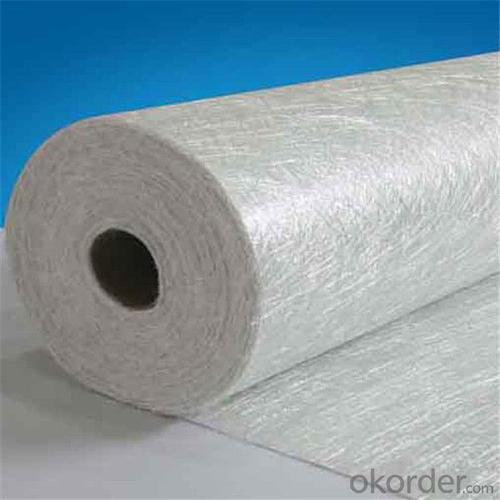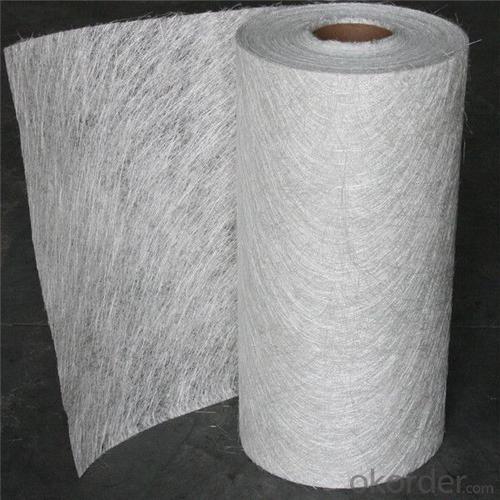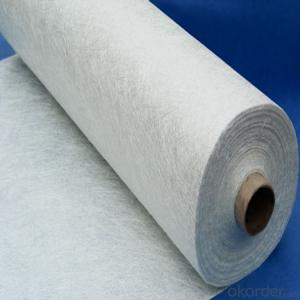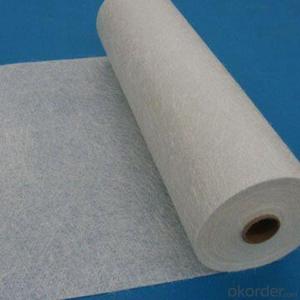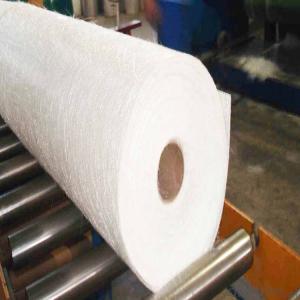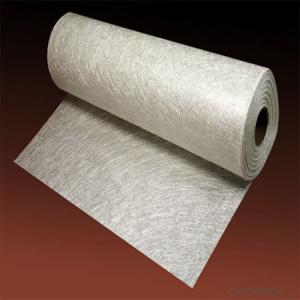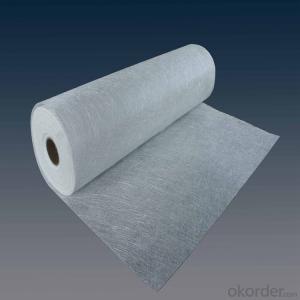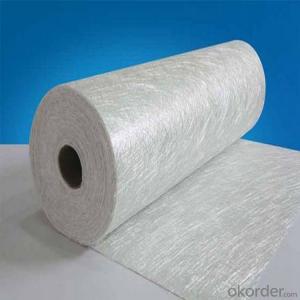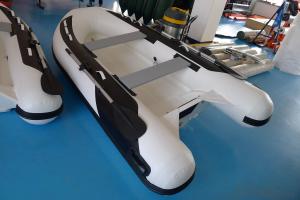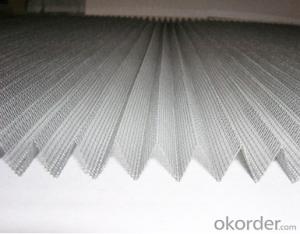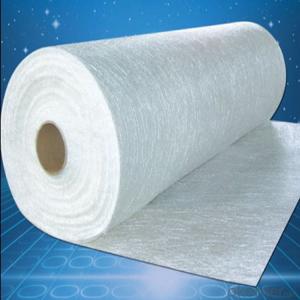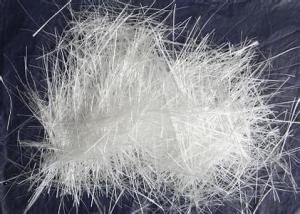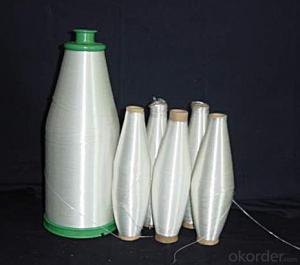2015 Fiberglass Boat Building Supplies
- Loading Port:
- Tianjin
- Payment Terms:
- TT OR LC
- Min Order Qty:
- 100 m.t.
- Supply Capability:
- 10000 m.t./month
OKorder Service Pledge
OKorder Financial Service
You Might Also Like
Quick Details
| Technique: | Chopped Strand Fiberglass Mat (CSM) | Dimensions: | 80g - 900g | Mat Type: | Continuous Filament Mat |
| Fiberglass Type: | E-Glass | Softness: | soft, very soft | Place of Origin: | Shandong, China (Mainland) |
| Brand Name: | cnbm | Model Number: | CSM | material: | fiberglass |
| Glass type: | E glass / C glass | Bond type: | powder or emulsion | Roll width: | 200 - 2600mm |
| Roll weight: | 28 - 55kgs | Density: | 225g/m2, 300g/m2, 450g/m2 | Certification: | ISO, CE |
Packaging & Delivery
| Packaging Details: | standand export packing . or packed as customer's need |
| Delivery Detail: | 10-20days after the contract is effective |
Specifications
Fiberglass Chopped Strand Mat
1.good combination fo resin
2.easy operation
3.good wet strength retention
Specification:
Fiberglass Chopped Strand Mat is an non-woven E- or C-glass fiberglass fabric manufactured by spreading continuous filament rovings of 50mm in length randomly and uniformly in combination with polyester binder in power form (or other binder in emulsion form). Powder or Emulsion fiberglass fiber chopped glass mat

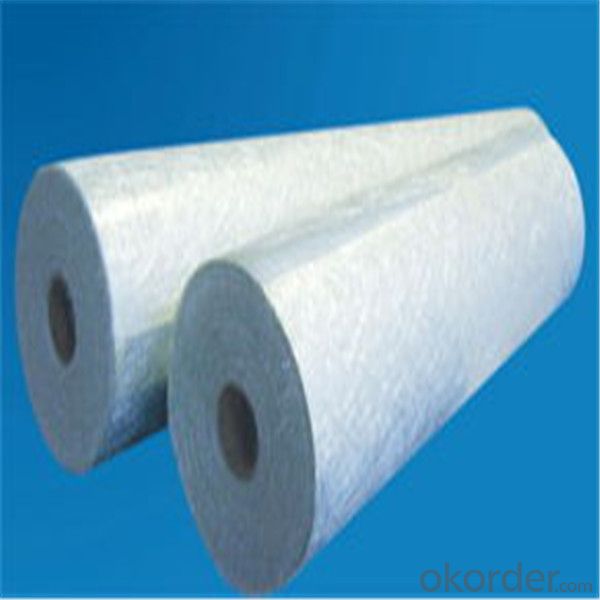
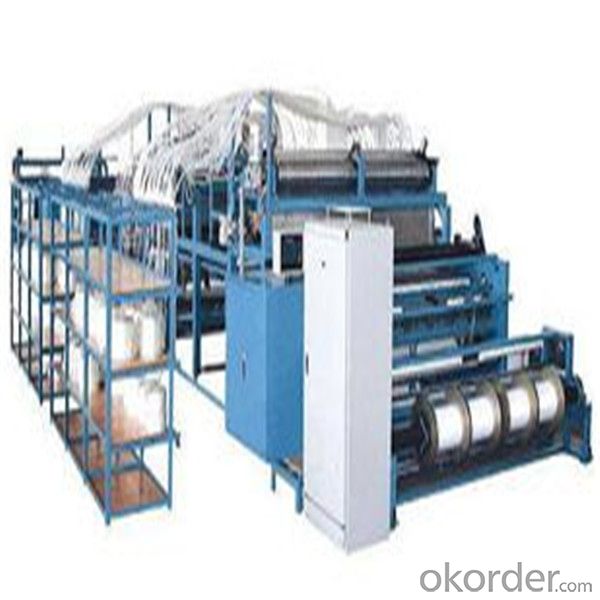
- Q: Uses, specifications and functions of the Geogrid.
- Geogrid is a major geosynthetics. Compared with other geosynthetics, it has a unique performance and effectiveness. Geogrid is usually used as the reinforced soil structure tendon material or composite material geosynthetics. The geogrid is divided into plastic geogrid, steel plastic geogrid, glass fiber geogrid and fiberglass polyester geogrid. (1) The plastic geogrid is Polymer netting materials with a square or rectangular shape after pultrusion. According to the direction of pultrusion, it can be divided into uniaxial?tension and two-way stretch. It is punched in the polymer sheet material (raw material is polypropylene or high density polyethylene) after pultrusion, and then operate orientation stretching in heating codition. The aniaxial tension geogrids is made only along the length direction of the sheet, while the two-way stretching gridgeogrids is made by pultrusion the aniaxial tension geogrids along the direction which is vertical to the length.
- Q: Is fiberglass chopped strand compatible with different resin systems?
- Different resin systems can be used with fiberglass chopped strand, including polyester, epoxy, vinylester, and polyurethane. The compatibility between the fiberglass chopped strand and the resin system is of utmost importance in order to achieve the best mechanical properties and overall performance of the composite material. It is essential to carefully select the resin system to ensure proper wetting and bonding of the chopped strands, which directly impacts the strength, stiffness, and other properties of the final composite product. To ensure compatibility and optimal performance, manufacturers often offer guidelines and recommendations for the preferred resin systems to be used with their specific fiberglass chopped strand products.
- Q: Does fiberglass chopped strand improve the dimensional stability of composite materials?
- Yes, fiberglass chopped strand does improve the dimensional stability of composite materials. When added to a composite matrix, the chopped strands help to reinforce the material and prevent it from warping or distorting under various external forces. The fiberglass strands provide strength and rigidity to the composite, enhancing its overall dimensional stability. This means that the composite material will maintain its shape and size more effectively, even when subjected to temperature changes, moisture absorption, or mechanical stresses. Additionally, the orientation and distribution of the chopped strand within the composite can be adjusted to further enhance its dimensional stability in specific applications. Overall, the inclusion of fiberglass chopped strand is an effective way to improve the dimensional stability of composite materials.
- Q: How does the fiber content affect the mechanical properties of fiberglass chopped strand composites?
- The fiber content in fiberglass chopped strand composites directly affects their mechanical properties. Increasing the fiber content generally enhances the strength, stiffness, and load-bearing capacity of the composites. This is because the fibers act as reinforcements, distributing stress and improving the overall structural integrity. Higher fiber content also improves resistance to cracks, impacts, and other forms of mechanical damage, making the composites more durable. However, there is a limit to the fiber content that can be added, as excessive amounts may result in decreased workability and increased brittleness. Therefore, finding the optimal fiber content is crucial to achieving the desired mechanical properties in fiberglass chopped strand composites.
- Q: How does the fiber alignment affect the performance of fiberglass chopped strand?
- The performance of fiberglass chopped strand is significantly determined by the alignment of its fibers. The alignment refers to how the individual glass fibers are oriented and arranged within the chopped strand. When the fibers are randomly aligned, the material exhibits isotropic properties, meaning that its mechanical properties are the same in all directions. This random alignment allows the chopped strand to have good strength and impact resistance in multiple directions. It also increases the overall flexibility of the material, making it easier to handle and process during manufacturing. On the other hand, when the fibers are aligned in a specific direction, it creates an anisotropic material with varying mechanical properties depending on the orientation of the fibers. The strength and stiffness are higher in the direction of the fiber alignment, while they are relatively lower in perpendicular directions. This alignment is often achieved by applying tension during the manufacturing process, resulting in a more rigid and directional material. The fiber alignment also affects the ability of fiberglass chopped strand to reinforce other materials. When randomly aligned, the chopped strand can evenly distribute the load and provide reinforcement in multiple directions, making it suitable for applications requiring isotropic strength. Conversely, when aligned in a specific direction, it can provide enhanced reinforcement and stiffness along that axis, making it suitable for applications where directional strength is required. In conclusion, the fiber alignment in fiberglass chopped strand has a significant impact on its performance. Random alignment provides isotropic strength, flexibility, and impact resistance, while specific alignment results in anisotropic properties with higher strength and stiffness in the aligned direction. The choice of fiber alignment depends on the specific application requirements and the desired mechanical properties of the final product.
- Q: What are the disadvantages of using fiberglass chopped strand?
- There are several disadvantages of using fiberglass chopped strand. Firstly, fiberglass chopped strand has a lower tensile strength compared to other reinforcement materials such as carbon fiber. This means that it may not be as effective in providing structural support in certain applications. Secondly, fiberglass chopped strand is prone to fraying and splitting. This can make it difficult to handle and work with, as it may require additional steps such as sealing the ends to prevent further damage. Additionally, fiberglass chopped strand is not as resistant to heat as some other materials. It can start to degrade and lose its properties at high temperatures, limiting its use in applications where heat resistance is crucial. Furthermore, fiberglass chopped strand has poor resistance to chemicals and solvents. It can easily be damaged or weakened when exposed to certain substances, which can limit its usability in various industries. Lastly, fiberglass chopped strand is not biodegradable and can be difficult to recycle. This can pose environmental concerns, especially when used in large quantities or disposed of improperly. Overall, while fiberglass chopped strand has its advantages such as being lightweight and cost-effective, it is important to consider these disadvantages before choosing it as a reinforcement material.
- Q: What are the typical creep properties of fiberglass chopped strand composites?
- The typical creep properties of fiberglass chopped strand composites refer to the material's tendency to deform and relax under a constant load or stress over an extended period of time. Fiberglass chopped strand composites exhibit relatively low creep compared to other materials such as metals or polymers. This is due to the reinforcing properties of the fiberglass strands, which provide strength and stiffness to the composite. Creep in fiberglass chopped strand composites is influenced by various factors, including temperature, humidity, and the applied load. At higher temperatures, the creep rate tends to increase as the matrix material softens, allowing for more deformation. Similarly, high humidity levels can accelerate creep as moisture can weaken the matrix and reduce the overall strength of the composite. The applied load or stress level also affects the creep behavior of fiberglass chopped strand composites. Higher loads typically lead to higher creep rates, as the material experiences greater deformation under the sustained stress. However, the reinforcing nature of the fiberglass strands helps mitigate creep by distributing the load and preventing localized deformations. Overall, fiberglass chopped strand composites exhibit relatively low creep properties, making them suitable for applications that require dimensional stability and resistance to prolonged stress. However, it is important to consider the specific environmental conditions and load requirements to ensure the material's performance meets the desired expectations.
- Q: What is basalt fibre used for?
- According to its characteristics, it is a very wide range of industrial raw materials. The price of basalt fiber is quite high, which is different from the basalt used for road repairing.
- Q: What are the impact strength properties of fiberglass chopped strand?
- The impact strength properties of fiberglass chopped strand are high and provide excellent resistance to impact and stress. This is due to the inherent strength and rigidity of the fiberglass material. The chopped strands are typically made up of short pieces of glass fibers that are randomly oriented and bound together with a resin matrix. This combination of the glass fibers and resin results in a material that can withstand high impact forces without breaking or fracturing. The impact strength properties of fiberglass chopped strand make it an ideal material for applications where impact resistance is important. It is commonly used in the manufacturing of various products such as automotive parts, boat hulls, sporting equipment, and construction materials. In these applications, the material is able to absorb and distribute impact forces, reducing the risk of damage or failure. Furthermore, fiberglass chopped strand can also offer enhanced impact resistance when combined with other reinforcing materials or additives. For example, adding fillers or modifiers to the resin matrix can further improve the impact strength properties of the material. This allows for customization and optimization of the material's performance to meet specific application requirements. In summary, fiberglass chopped strand exhibits high impact strength properties that make it a durable and reliable material. Its ability to withstand impact forces without breaking or fracturing makes it suitable for a wide range of applications where impact resistance is crucial.
- Q: How is fiberglass chopped strand used in the agricultural sector?
- Fiberglass chopped strand is widely used in the agricultural sector for various applications. One common use is in the manufacturing of livestock and poultry housing structures. The chopped strand is mixed with resin and applied in layers to create strong and durable panels, roofs, and walls for these structures. This helps provide a secure and comfortable environment for the animals while also being resistant to harsh weather conditions. Additionally, fiberglass chopped strand is utilized in the production of irrigation systems. The strands are mixed with other materials to create pipes, tubes, and tanks that are used for storing and distributing water in agricultural fields. These fiberglass-based irrigation systems offer excellent resistance to corrosion, ensuring the longevity and efficiency of the water distribution process. Moreover, fiberglass chopped strand is employed in the manufacturing of agricultural equipment such as sprayers, seeders, and fertilizers. The chopped strand is mixed with plastic resin to create strong and lightweight components, which enhance the overall performance and durability of these machines. This allows farmers to efficiently and effectively manage their crops, ultimately increasing productivity. Furthermore, fiberglass chopped strand is used in the construction of greenhouses and nurseries. The strands are mixed with other materials to create panels and roofing systems that provide optimal light transmission and thermal insulation. This creates an ideal environment for plant growth, protecting them from extreme weather conditions and ensuring their healthy development. Overall, the use of fiberglass chopped strand in the agricultural sector is diverse and essential. It plays a crucial role in creating durable housing structures for livestock, manufacturing efficient irrigation systems, producing reliable agricultural equipment, and constructing effective greenhouses. The strength, versatility, and resistance to corrosion make fiberglass chopped strand an ideal material for various agricultural applications, ultimately contributing to improved farming practices and increased crop yields.
Send your message to us
2015 Fiberglass Boat Building Supplies
- Loading Port:
- Tianjin
- Payment Terms:
- TT OR LC
- Min Order Qty:
- 100 m.t.
- Supply Capability:
- 10000 m.t./month
OKorder Service Pledge
OKorder Financial Service
Similar products
Hot products
Hot Searches
Related keywords
